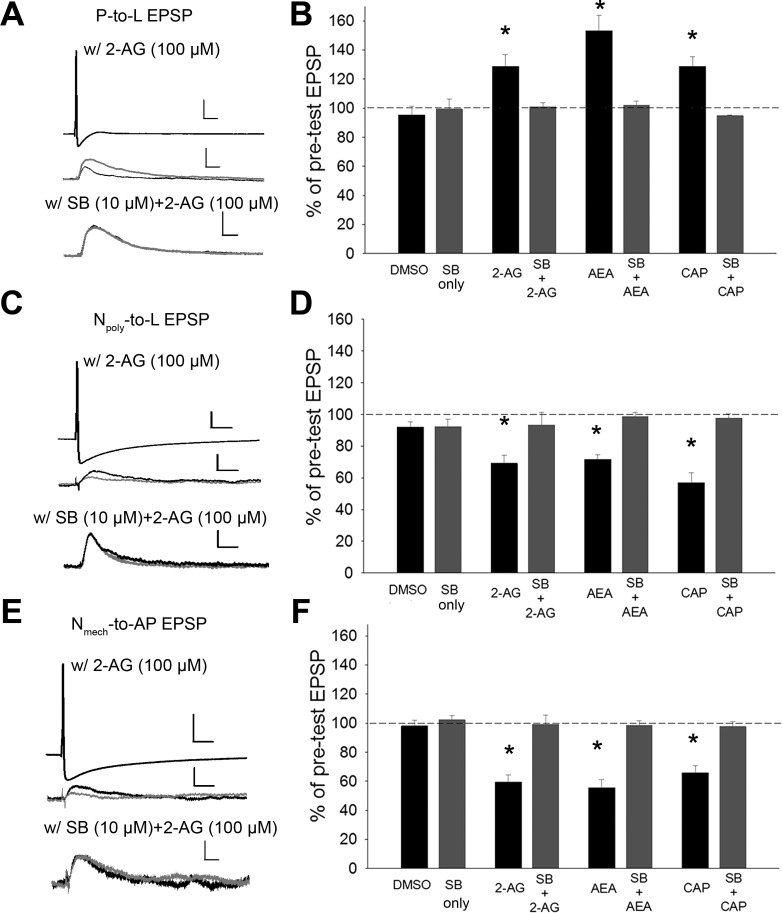Fig. 2.
Endocannabinoid-mediated synaptic plasticity in P, Npoly, and Nmech synapses. A, C, and E, top: example of changes in excitatory postsynaptic potential (EPSP) amplitude elicited by either the P (A), Npoly, (C) or Nmech neuron (E; scale bar = 20.0 mV/50 ms), following or 2-arachydonoyl glycerol (2-AG) treatment (middle; scales bars = 2.0 mV/50 ms) or 2-AG + SB 366791 (SB) (bottom; scale bars = 2.0 mV/50 ms for P and Npoly and 1.5 mV/50 ms for Nmech). Black and gray traces are pre- and posttest EPSPs (averaged from 5–10 recordings), respectively. B, D, and F: mean ± SE EPSP (shown as %pretest EPSP amplitude) following vehicle, endocannabinoid, or capsaicin (CAP) treatment with or without SB. 2-AG, anandamide (AEA), and CAP elicited potentiation in P synapses (B) but depressed Npoly (D) and Nmech (F) synapses. For all 3 synapse types, SB blocked synaptic changes elicited by 2-AG, AEA, and CAP and no change in EPSP amplitude was observed in the vehicle control (0.01% DMSO) or SB only groups. *Statistically significant differences based on one-way ANOVA with Student-Newman-Keuls post hoc test (see results); n = 5 (different animals) for all treatment and control groups.

